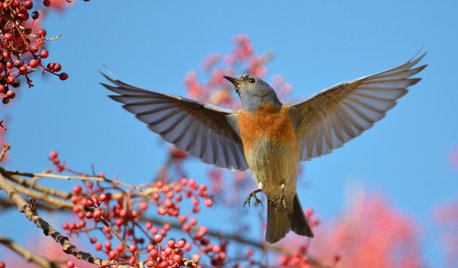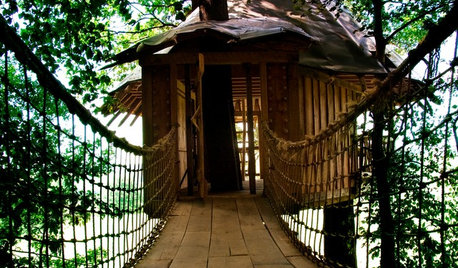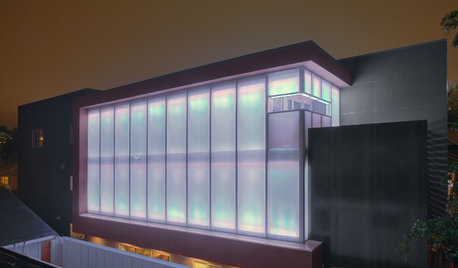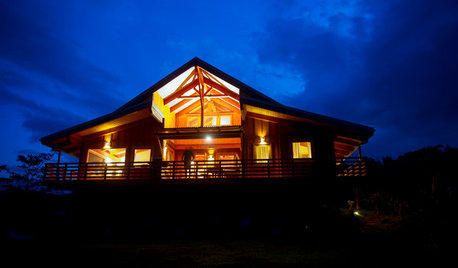Sources of pole shellies?
tetrazzini
14 years ago
Related Stories

GARDENING GUIDESHow to Bring the Joy of Bluebirds to Your Garden
Attract these beautiful songbirds with nesting habitat and food sources, including berry-producing trees and shrubs
Full Story
REMODELING GUIDESDouble Take: 'Floating' Wine Bottles Rack Up Style Points
Look closely to spy the secret of this wine rack, concocted by a clever homeowner needing a design workaround
Full Story
APARTMENTSHouzz Tour: Life in a Converted School Building
A son renovates a space his mother can call her own when she comes to visit
Full Story
ARCHITECTUREWhat You Must Know About the Sun and Your Home
Learn about the powerful effects of sunlight on house materials and more, and see 7 homes that address the sun's rays beautifully
Full Story
OUTBUILDINGS12 Fun Backyard Forts Grown-Ups Can Love, Too
Kids might use them for secret meetings, but the word is out on these tree houses and playhouses that consider adult design tastes
Full Story
LIGHTINGTranslucent Surfaces: A Canvas for Light and Shadow
Look at the Effects You Can Create With Translucent Panels Inside and Out
Full Story
HOUZZ TOURSHouzz Tour: A Modern Take on a Traditional Texas Farmhouse
Contemporary details update the classic form in this Austin home with a kitchen designed for a professional baker
Full Story

HOUZZ TOURSMy Houzz: Tropical Chalet Style Suits a Maui Family
Balinese teak, boat accents and relaxed styling give this island home a bohemian spirit
Full Story
GREEN BUILDINGOff the Grid: Ready to Pull the Plug on City Power?
What to consider if you want to stop relying on public utilities — or just have a more energy-efficient home
Full StorySponsored






zeedman Zone 5 Wisconsin
tetrazziniOriginal Author
Related Professionals
Londonderry Landscape Architects & Landscape Designers · Deer Park Landscape Architects & Landscape Designers · Grand Haven Landscape Architects & Landscape Designers · Forest City Landscape Architects & Landscape Designers · Canton Landscape Contractors · Maple Valley Landscape Contractors · Camp Verde Landscape Contractors · Cliffside Park Landscape Contractors · East Haven Landscape Contractors · Oak Forest Landscape Contractors · Point Pleasant Landscape Contractors · Golden Valley Landscape Contractors · Hot Springs Village Decks, Patios & Outdoor Enclosures · North Aurora Decks, Patios & Outdoor Enclosures · Universal City Decks, Patios & Outdoor Enclosuresfusion_power
jimster
happyday
drloyd
tetrazziniOriginal Author
fusion_power
zeedman Zone 5 Wisconsin
jimster
tetrazziniOriginal Author
jimster
jimster
tetrazziniOriginal Author
happyday
zeedman Zone 5 Wisconsin
zeedman Zone 5 Wisconsin